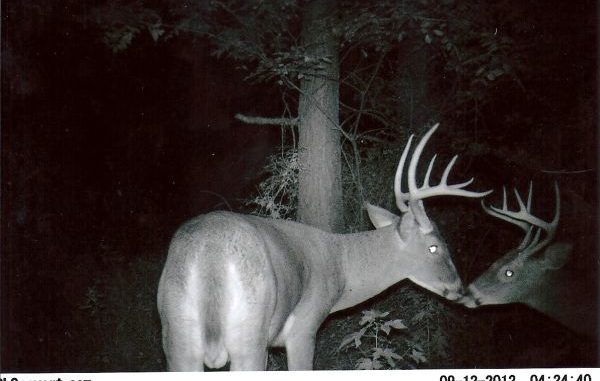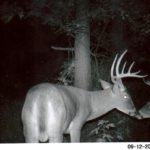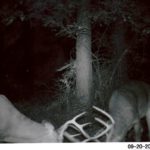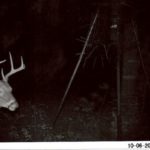
Observations of deer and deer activity during the months of September and October indicate the rut is on schedule; now we need Mother Nature to do her part with some cold weather.
Trying to pinpoint exactly when the rut will occur during the deer season can be difficult. Many variables come into play: physical condition of the deer, changing habitat conditions, and impact of the weather on the deer and the habitat.
We saw that Hurricane Isaac caused LDWF to change the season in those swamp areas that were severely impacted by the storm and no doubt these deer, because of the storm and impacted habitat, will probably breed later than expected. It will require time for surviving does to get physically fit in order to go through their reproductive cycle.
It is easy to say that Area 2 deer will be breeding in November and December, or the early rut deer in Area 1 will breed in December and January — so set your vacation time for those months.
Unfortunately, most people — unless they are retired — do not have the luxury to take off for two months during the deer season; thus hunters would like a little better idea of when to use these valuable vacation days.
The peak breeding dates for a herd, based on the average dates of the total known documented breeding dates, are one source that hunters can use. However, this average is based over many years and the truth is that the rut will vary to some extent from one year to another, so if you used these dates as your hunting dates every year you may miss the peak activity for that year.
The Sportsman’s rut calendar that I put together every year is based on the scrape initiation period of bucks. This occurs the month before the rut activity begins, and from what I have always seen it occurs between the new moon and the full moon.
Now, there are two trains of thought among Southeastern deer biologists: those who believe there is some influence by the moon on breeding activity and those who do not.
I believe there is some influence; since we are not the Creator of the creature, we cannot devise a study that is going to tell us all we need to know about the creature despite our best efforts. Only the Creator who created it knows how it really ticks!
Trail cameras have been in use for many years and are a wonderful tool for the deer manager and the hunter. I have used these cameras ever since they came out in the early 90s, and this is how I learned about the scrape initiation period.
These cameras work well to document activity at a scrape, and will point out when the peak scraping is going on.
Of course, the cameras work well at feeding locations, as everyone knows. When the bucks have been feeding regular at a site and then disappear for several weeks, one can probably assume that the rut is underway and the boys are off chasing the girls.
This is what I have been doing on an tract of land in Desoto Parish for several years now. Cameras set up across the landscape prior to the rut show good feeding activity by the bucks, and then as the rut progresses they disappear from the photos. After a couple of weeks they are back at the feeders for a few days, and then once more they are off and chasing.
This year at one of the feeding stations, the cameras documented some of the pre-rut activity of two bucks. The 2012 Rut Calendar predicted that scrape initiation for Area 2 to be from Sept. 15-29. During this time, bucks open up old scrapes and spend time interacting with other bucks and establish the social hierarchy that will be in place for the season. Bucks that have been buddies during the spring and summer are now a little edgy due to increased testosterone levels, and when an old buddy gets too close there might be a little pushing and shoving.
At one of the feeding stations on this tract a nice 8-point was photographed on Sept. 10. Two days later on Sept. 12 this buck is face to face with another buck, this one a little larger 8-point (these photos would make for a good shoot-don’t shoot question). The two bucks do like most animals do and use their noses to really get to know each other.
All seems OK on the 12th, but on Sept. 20 the camera catches them with their ears back, noses to the ground and a with a little antler contact going on. Apparently neither one wanted to share the rice bran, and it was now time to find out who is boss.
Now note that all this activity is right on schedule with scrape initiation and the pre-rut activity (Sept. 15-29).
The photo of the smaller buck on Oct. 6 shows the end result of the encounter — a broken brow tine on the right beam.
How do we know this is the same buck? Look at the brow tine on the left beam, in addition to the beams and other points.
While changing camera cards on Oct. 23 I found many fresh scrapes around the feeding sites, and the big target buck that I have been tracking was not photographed at any feeders — a sure sign to me that the first round of the rut (Oct. 15-Nov. 12) is underway in Area 2.
This buck will be the subject of a story in an upcoming issue.
If the Area 2 rut is on the predicted schedule, then the rut in the other hunting areas should occur as predicted.
I hunted in Clinton the last week of October when our first cold weather blew in, and deer movement was great. The early morning temperatures on that Monday and Tuesday were in the mid-30s and stayed below 60 all morning.
Of course, being retired I am able to take advantage of good weather conditions since I do not have to worry about that old 8 to 5 grind!





